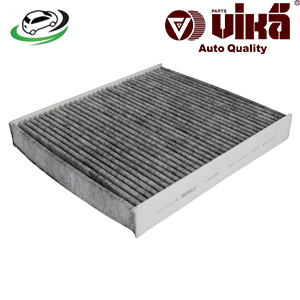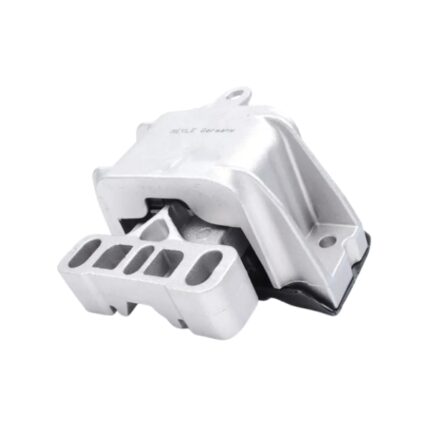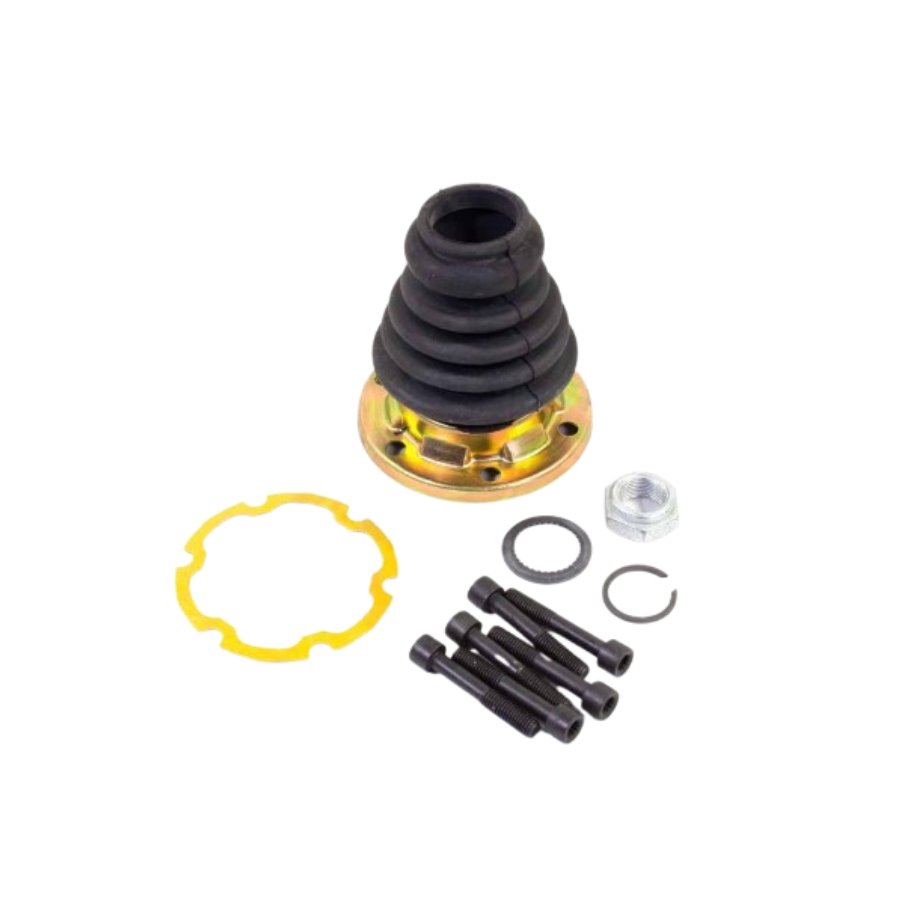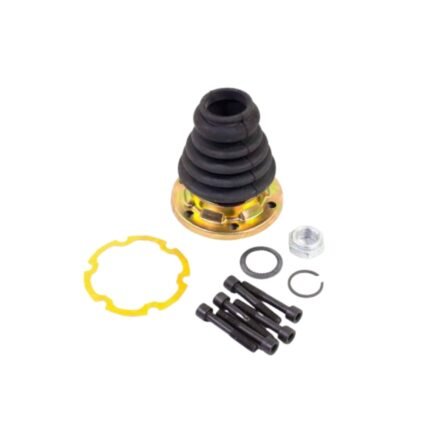Get VW Corrado G60 Front Right Inner CV Boot Kit 191498202A in Kenya
The drive shaft CV (Constant Velocity) joint is a crucial part of a vehicle’s drivetrain system, ensuring the smooth and efficient transfer of power from the engine to the wheels. Understanding the role, functionality, types, maintenance, and common issues related to CV joints can help vehicle owners maintain optimal performance and avoid costly repairs.
Functionality and Role of the CV Joint
The primary function of the CV joint is to transfer torque from the drive shaft to the wheels while accommodating the up-and-down movement of the suspension and the side-to-side motion of steering. Unlike universal joints, CV joints maintain a constant rotational speed, ensuring a smooth power delivery even at varying angles.
CV joints are typically found in front-wheel-drive vehicles but are also present in many rear-wheel-drive and all-wheel-drive vehicles. They are located at both ends of the drive shaft: the inner CV joint connects to the transmission, and the outer CV joint connects to the wheel hub.
Types of CV Joints
There are two main types of CV joints: ball-type and tripod-type.
- Ball-Type CV Joints
- Rzeppa Joint: The most common type, it consists of a spherical inner joint with a series of balls that transfer torque. It can handle significant angles and is typically used on the outer end of the drive shaft.
- Double Offset Joint: Similar to the Rzeppa joint but allows for a greater range of motion. It is used in some applications where additional flexibility is needed.
- Tripod-Type CV Joints
- These joints have three trunnions (bearing-equipped yokes) that slide in and out of a three-groove housing. They are primarily used on the inner end of the drive shaft and allow for axial movement, accommodating changes in length due to suspension travel.
Materials and Construction
CV joints are typically made from high-strength steel to withstand the stresses of transferring torque and the constant movement. The internal components, such as the balls and trunnions, are precisely machined to ensure smooth operation and long-lasting durability.
The CV joint is encased in a protective rubber or silicone boot filled with grease. This boot seals out dirt and moisture while keeping the internal components lubricated, ensuring smooth operation and preventing premature wear.
Signs of a Failing CV Joint
Recognizing the signs of a failing CV joint can help prevent more severe damage to the drivetrain. Common indicators include:
- Clicking or Popping Noises
- One of the most noticeable signs is a clicking or popping noise when turning. This sound is usually more pronounced during sharp turns or acceleration and indicates that the outer CV joint is worn.
- Vibration While Driving
- A failing CV joint can cause vibrations while driving, especially during acceleration. This is due to the joint losing its balance and transferring uneven torque to the wheels.
- Grease Leaks
- If you notice grease on the inside of your wheel or on the suspension components, it may indicate a torn CV boot. Once the boot is compromised, the grease leaks out, and dirt and moisture can enter, leading to joint failure.
- Clunking Sounds
- Clunking or knocking noises during acceleration or deceleration can indicate that the inner CV joint is worn or damaged.
- Reduced Steering Control
- A failing CV joint can affect the vehicle’s steering and handling, making it feel loose or less responsive.
Benefits of CV Joint
1. Smooth Power Transmission
One of the primary benefits of CV joints is their ability to deliver smooth and consistent power from the engine to the wheels. Unlike universal joints, CV joints maintain a constant rotational speed even when the drive shaft is at different angles. This ensures that the power transfer is efficient and smooth, leading to a more comfortable and stable driving experience. This smooth power delivery is crucial for maintaining vehicle control and minimizing vibrations, especially during turns and over uneven surfaces.
2. Enhanced Flexibility and Movement
CV joints are designed to accommodate the complex movements of modern suspension and steering systems. They allow for greater flexibility in the drive shaft, enabling it to move up and down with the suspension and pivot during steering. This flexibility is essential for maintaining traction and stability, particularly in front-wheel-drive and all-wheel-drive vehicles where the drive shaft needs to accommodate both vertical and horizontal movements.
3. Improved Vehicle Handling
By providing smooth and consistent power transfer, CV joints contribute significantly to the vehicle’s handling characteristics. They ensure that the wheels receive uniform torque, which helps in maintaining grip and traction during acceleration, braking, and cornering. This results in better control and responsiveness, enhancing the overall driving dynamics. In high-performance and sports cars, this improved handling is particularly noticeable, providing a more engaging and precise driving experience.
4. Durability and Longevity
CV joints are built to withstand significant stresses and harsh operating conditions. High-quality materials, such as hardened steel, are used in their construction, ensuring durability and resistance to wear and tear. The use of protective boots filled with grease helps keep the joints lubricated and free from contaminants, further extending their lifespan. With proper maintenance, CV joints can last for many years, providing reliable performance and reducing the need for frequent replacements.
5. Noise Reduction
Worn or damaged drive train components can produce various noises, such as clicking, clunking, or grinding. CV joints, when in good condition, operate quietly, contributing to a more pleasant and comfortable driving experience. Their ability to maintain constant velocity and smooth operation minimizes the vibrations and noise that can result from irregular power transfer, ensuring a quieter cabin environment.
6. Safety Enhancements
The safety of a vehicle is significantly influenced by the reliability of its drivetrain components. CV joints play a critical role in maintaining control and stability, especially during sudden maneuvers or on slippery surfaces. Their ability to deliver consistent torque to the wheels helps prevent wheel spin and loss of traction, reducing the risk of skidding or loss of control. This is particularly important in adverse weather conditions, such as rain, snow, or ice, where maintaining grip is crucial for safe driving.
7. Versatility Across Different Vehicle Types
CV joints are versatile and used in various vehicle types, including front-wheel-drive, rear-wheel-drive, and all-wheel-drive systems. This versatility allows manufacturers to design vehicles with different drivetrain configurations while still benefiting from the efficient power transfer and flexibility provided by CV joints. Whether in a compact car, an SUV, or a performance vehicle, CV joints enhance the overall drivetrain efficiency and performance.
8. Maintenance and Cost-Effectiveness
While CV joints are durable, they are also designed to be relatively easy to maintain and replace. Regular inspection of the protective boots and timely replacement of damaged or worn CV joints can prevent more significant issues and costly repairs. Maintaining CV joints is a cost-effective way to ensure the longevity and reliability of the drivetrain. The relatively low cost of CV joints and their ease of replacement make them a practical solution for maintaining vehicle performance without significant expenses.
9. Compatibility with Advanced Technologies
Modern vehicles often incorporate advanced technologies such as traction control, electronic stability control, and all-wheel-drive systems. CV joints are compatible with these technologies, ensuring that the power transfer and flexibility needed for these systems to function effectively are provided. This compatibility allows for the integration of advanced safety and performance features, enhancing the overall driving experience and vehicle capability.
10. Enhanced Performance in Off-Road and Extreme Conditions
For vehicles designed for off-road use or extreme conditions, CV joints offer significant benefits. Their ability to handle extreme angles and movements makes them ideal for vehicles that need to navigate rough terrains, steep inclines, and uneven surfaces. Off-road vehicles and all-terrain vehicles (ATVs) rely on CV joints to maintain power delivery and traction in challenging environments, ensuring that they can perform effectively and reliably.
Replacement Process
Replacing a CV joint can be a complex task that typically involves the following steps:
- Lift the Vehicle
- Safely lift the vehicle using a jack and secure it with jack stands.
- Remove the Wheel
- Remove the wheel to access the drive shaft and CV joint.
- Disconnect the Drive Shaft
- Disconnect the drive shaft from the transmission or differential and the wheel hub.
- Remove the CV Joint
- Remove the damaged CV joint from the drive shaft. This may involve removing retaining clips or bolts.
- Install the New CV Joint
- Install the new CV joint, ensuring it is properly seated and secured. Reattach the drive shaft to the transmission or differential and the wheel hub.
- Reassemble and Test
- Reassemble all components, lower the vehicle, and test for proper operation.
Follow us on Facebook for more parts.




